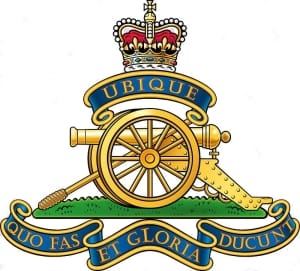Formation
The 7th Field Artillery Brigade, 3rd Division, AIF was formed at the “Warren” a one time convent, in the suburb of Marrickville, NSW on 17 March 1916, under the command of Lieutenant Colonel R. St. J. Pearce, VD. The Brigade comprised Brigade Headquarters, 25, 26, 27 and 28 Field Batteries (each of four 18 pounder guns) and 7th Field Brigade Ammunition Column. The Brigade embarked at Sydney on HMAT Argyllshire on the 11 May 1916. It arrived at Portsmouth, England on 11 July. Training took place at Larkhill, Salisbury Plains, Wiltshire where the 23rd Howitzer Brigade was abolished and 107 Howitzer Battery of this Brigade, with 4.5 inch howitzers, was allocated to 7th Field Artillery Brigade. 28 Field Battery was allocated to a new artillery brigade, the 23rd Field Artillery Brigade.
The brigade disembarked at Le Havre, France on 31 December 1916. At Stazeele in January 1917 a further reorganisation of the Brigade occurred. The batteries were reformed and made into six gun batteries. The original 27 Battery was cut up and its personnel allocated amongst the other batteries. A new 27 Battery was formed out of the now disbanded 23 Field Artillery Brigade. This reorganisation was to economise on battery commanders, who were in short supply.
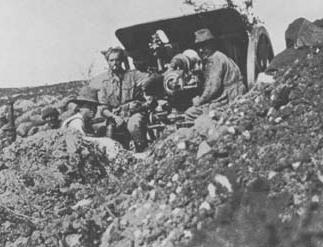
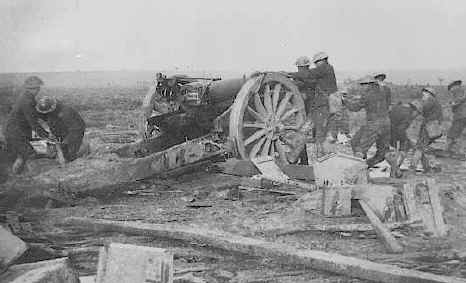
The Brigade went into action on 17 January 1917 at Armentieres and took part in the battles of Menin Road, Broodseinde, Passchendaele, Morlancourt, Mont St. Quentin, Messines and the Hindenburg Line. Towards the end of the war, in 1918, the Brigade served with the 27th United States Division. On 3 April 1919 the 7th and 8th Field Artillery Brigades were amalgamated.
By the end of April only about 250 men remained in both brigades and on 1 May 1919 2nd Division Artillery and 7th Field Artillery Brigade ceased to function. The remaining personnel were formed into one battery (26 Field Battery) and attached to 4th Field Artillery Brigade for demobilisation. On 18 August 1919, the Brigade was removed from the line of battle.
Between Wars
On 31st March 1921, VII Australian Field Artillery Brigade was formed under the command of Lieutenant Colonel C.A. Callaghan, CMG, DSO at Mount Street, North Sydney, NSW. The Brigade comprised Brigade Headquarters, 25 and 27 Battery AFA and 107 (Howitzer) Battery. 26 Battery AFA was not raised at this time. In 1929 the gradation lists show the Brigades designation as VII Brigade AFA.
In 1929 the Brigade was moved into a riding school’s buildings at Warrane Road, Willoughby. The Menage (riding school) and stables were situated between Tyneside Avenue and Eastern Valley Way opposite the old Willoughby depot. The riding school was run by the Remount Section, Army Service Corp with assistance from the Veterinary Corp. Also attached to the unit were members of the Corp of Signals. The Brigade was now known as 7th Field Brigade AFA.
From 1921-1939 annual camps were held at Liverpool, Holsworthy, Greta, Aberglassyn and Williamtown. Guns and remounts were obtained at depots in the area. The Brigade designation is shown in the gradation lists of 1937 as 7th Field Brigade Royal Australian Artillery (Militia). 26 Field Battery was raised in May 1939, and the Brigade was also mechanised.
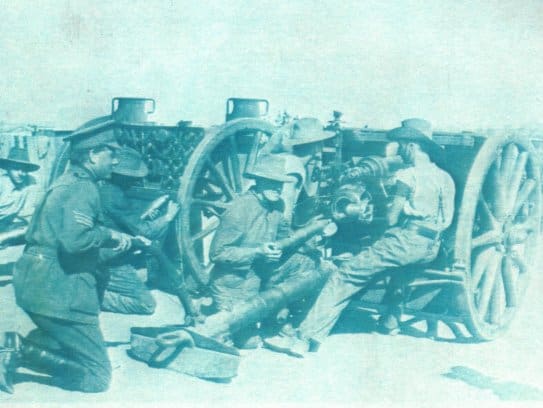
World War 2
On 3 September 1939 each battery was equipped with four guns. Many individual members of the Brigade joined the AIF in the first twelve months of hostilities, including 36 Regimental officers and the medical officer. The majority joined 2/1st, 2/6th, 2/9th and 2/15th Field Regiment. More officers and other ranks joined later, especially in response to recruiting campaigns during annual camps in 1940 and 1941. In early 1940 recruits were trained at the depot, because of a lack of artillery training camps, before allocation to AIF units. This resulted in the 2/9th Field Regiment being designated “A Friend of the Regiment” on 4 October 1977. Many of its members first military training was received at the Willoughby depot.
By the time of the annual camp in April 1940 at Greta and Largs in NSW motorisation with civilian vehicles and two Marmon Harrington gun tractors per battery was complete. In the three gun batteries (25, 26 & 27) the guns were shod with pneumatic tyres, but the solid iron tyres of the Q.F. 4.5 Howitzers of 107 (H) Battery were not replaced until the end of this camp. The Brigade was now designated as the 7th Field Regiment, RAA (Militia).
The next year’s camp was held at Ingleburn, Warwick Farm and Narellan in April 1941. On 1 October 1941, 7 Field Regiment consisting of 25, 26, 27 Field and 107(H) Batteries was allocated to full time duty. Late in 1941 the 18 pounders and the 4.5 inch howitzers were withdrawn and 25 pounders issued in their place. 107(H) Battery was disbanded and the personnel were allotted to 26 battery. Each battery was split into two troops of four guns. During 1941 and 1942 training of the Regiment and of replacement officers was carried out at Wallgrove and Greta. The Regiment was also used to defend the beaches at Narrabeen, Manly, Coogee and Wollongong.
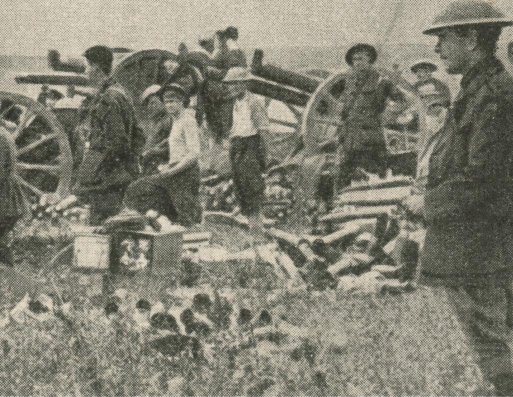
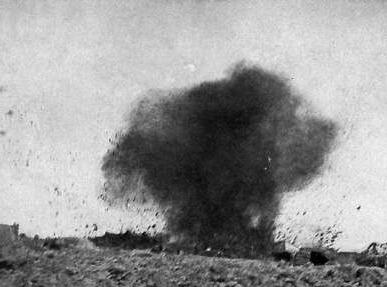
During July 1942 the Regiment, with a strength of 600 men, was transferred to Western Australia as part of the 8th Infantry Brigade, 2nd Division, 3rd Australian Corps. It served at Chidlow, Gin Gin, Bellevue, Geraldton, Dandaragan and Mingenew.
On 18 July 1942 the Regiment was redesignated as an AIF regiment. All of the officers and 75% of the other ranks volunteered for overseas service. The Regiment became known as the 7th Australian Field Regiment (AIF).
In October, 1943 the Regiment was returned to Wallgrove NSW where it was disbanded.
There were too many artillery units in existence for the operational requirements at the time. The members of the Regiment were allocated to other artillery units.
Post War
On the re-raising of the CMF in 1948, 7th Field Regiment, RAA was reformed at Warrane Road, Willoughby under the command of Lieutenant Colonel C.E. Chapman, ED on 1 April. Recruiting began in June 1948 to form P and Q batteries. R Battery was formed in 1950. With the introduction of National Service, R Battery was transferred to Hornsby in December 1951 under the command of Major O.N. Rosevear, ED. On 11 March 1952 this battery became the nucleus of 21 Field Regiment, RAA. On the disbandment of 21 Field Regiment on 7 August 1957 some members joined 7th Field Regiment. R Battery was again reformed at Willoughby in 1955 and was disbanded in June 1960 at the conclusion of National Service. Following the conclusion of the National Service scheme 14 Field Regiment, RAA was absorbed on 6 May 1960 and became Q Battery 7th Field Regiment. P Battery and RHQ remained at Willoughby.
In 1964 the batteries were renamed. P Battery became 26 Field Battery and Q Battery became 27 Field Battery. A HQ Battery was formed. 26 Field Battery’s 25 pounders were withdrawn in 1965 and were replaced with 105mm L5 pack howitzers. The L5’s were themselves withdrawn late in 1966, for use in Vietnam, and replaced by the return of 25 pounders. During 1969, the Marrickville depot was closed and 27 Field Battery was transferred to Willoughby.
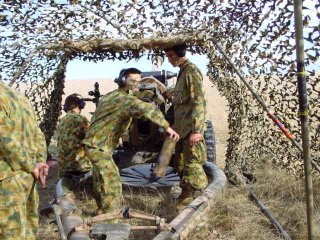
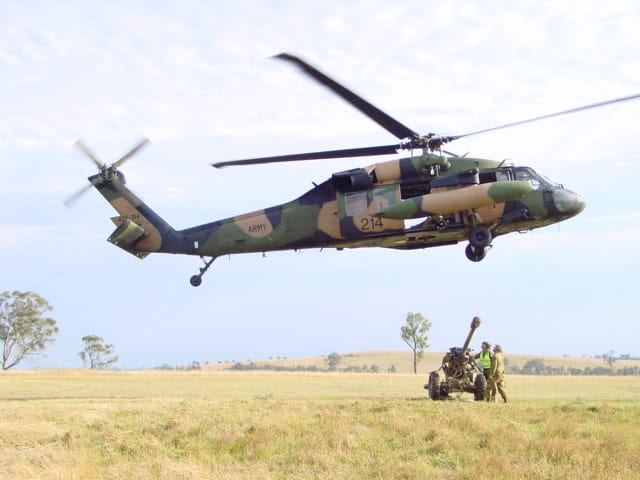
During 1973 the 25 pounders were finally replaced by L5 howitzers. 26 and 27 Field Batteries were disbanded on the 1st November 1973 and were reformed as 28 Field Battery at Willoughby. A new battery, 5 Field Battery was created from the disbanded 9 LAA Regiment at South Creek Road, Dee Why.
In 1975, the Regiment was reorganised. 5 Field Battery was disbanded in 1976 and absorbed into 28 Field Battery, which then moved to Dee Why. On 10 August 1976 113 LAA Battery became part of the Regiment as 113 Field Battery. At Willoughby the Regiment comprised RHQ, HQ Battery and Technical Support Troop. Around this period the L5 was replaced by the M2A2 105mm Howitzer. On 31 December 1981 the Regiment became a 12 gun Regiment. In 1994 113 Field Battery moved to a new Multi User Depot in Military Road, Adamstown.
January 1996 saw the Regiment move from its Willoughby depot, to take up residence in a refurbished Multi User Facility, located at Pymble NSW. The Regiment shares this facility with 2/17 Battalion, Royal New South Wales Regiment. 16 March 1996 saw the official closure of the Warrane Road Depot.
In 1998 113 Battery began sharing a depot with 2/17 RNSWR at Erina on the Central Coast.
